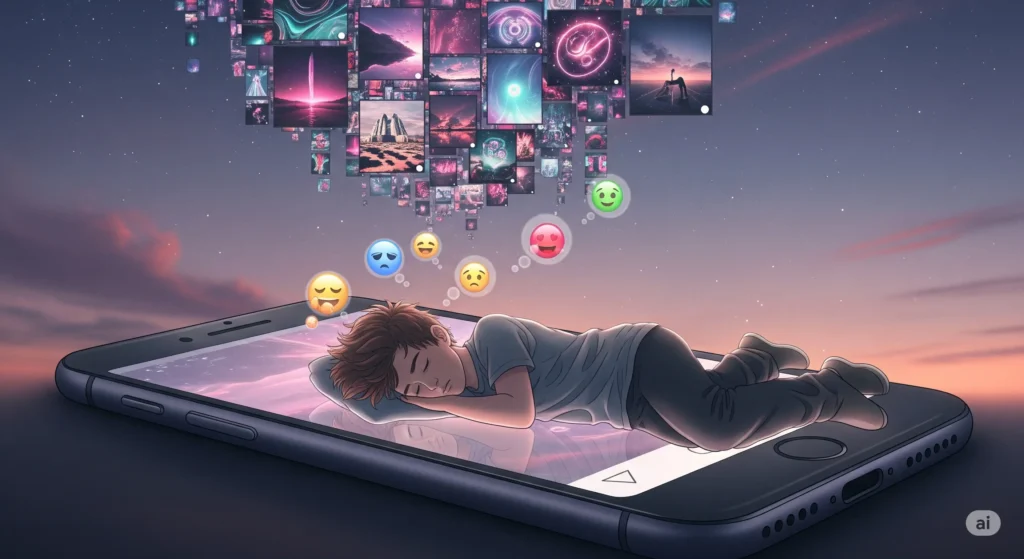In the labyrinthine corridors of the 21st century, where the digital and physical realms increasingly blur, a new generation is carving out its own distinct reality. This is Generation Z, the true digital natives, whose formative years have been inextricably linked with the internet, smartphones, and the relentless hum of social media. Their unique relationship with technology has given rise to a fascinating phenomenon: Gen Z’s Dreamscape. It’s not merely a metaphor for their aspirations or imaginative worlds, but a vibrant, ever-evolving space where the aesthetics, narratives, and social dynamics of video games and social media coalesce to shape their worldview, career paths, and even their understanding of identity.
To truly grasp this dreamscape, one must first acknowledge the fundamental shift in how Gen Z interacts with information and entertainment. Unlike previous generations, they didn’t adapt to the digital age; they were born into it. For them, a world without instant connectivity, without a searchable archive of human knowledge, or without the ability to connect with anyone, anywhere, is simply unimaginable. This intrinsic digital fluency has profound implications, creating a generation that is highly visual, deeply communal, and acutely aware of global trends and issues.
The Gamified Gaze: Worlds Built on Pixels and Possibilities
For many in Gen Z, video games are far more than a pastime; they are foundational cultural touchstones, virtual “third spaces” where social interactions, learning, and self-expression flourish. Think of the sprawling, user-generated universes of Minecraft or Roblox, where players aren’t just consumers of content but active architects of their own digital realities. These platforms allow for unparalleled creative freedom, fostering skills in design, collaboration, and problem-solving. A teenager meticulously building an elaborate digital city in Minecraft is not just playing; they’re engaging in complex spatial reasoning, resource management, and even rudimentary coding, all while collaborating with friends from across the globe.
Beyond creation, games like Fortnite have redefined social interaction. They host virtual concerts, fashion shows, and casual hangouts, transforming what was once a competitive arena into a vibrant social square. This phenomenon showcases a key aspect of Gen Z’s dreamscape: the seamless integration of entertainment and socialization. The lines between “playing a game” and “hanging out with friends” are increasingly blurred, and the digital environment often serves as the primary stage for their social lives. This constant exposure to diverse virtual worlds, characters, and narratives also broadens their perspectives, cultivating open-mindedness and an acceptance of different cultures and identities. Studies show that engaging with rich in-game narratives allows Gen Z to explore complex ethical dilemmas and various facets of human experience, contributing to their understanding of the world and their place within it.
Moreover, the gamified experience extends beyond dedicated gaming platforms. Many social media apps have integrated game-like elements, from Snapchat filters that transform your face into an anime character to TikTok challenges that encourage creative, competitive participation. This inherent “gamification” of daily digital life reinforces a mindset of active participation, instant feedback, and the constant pursuit of new experiences. It’s a world where every interaction can be a quest, every post a level-up.
The Social Canvas: Identity, Authenticity, and the Curated Self
If video games provide the architectural blueprints for Gen Z’s dreamscape, social media offers the vibrant, ever-changing canvas upon which they paint their identities and build communities. Platforms like TikTok and Instagram are not merely broadcasting channels; they are laboratories of self-expression, where visual communication reigns supreme. Emojis, GIFs, memes, and short-form videos are the new lingua franca, allowing for nuanced expression and rapid information exchange.
Gen Z’s approach to online identity is marked by a fascinating duality: a desire for authenticity coupled with a masterful understanding of curation. They are often lauded for prioritizing genuine self-expression over curated perfection, readily sharing flaws and challenges. This “messy realness” is seen as fostering deeper, more relatable connections. However, this authenticity often exists within carefully constructed frameworks. Consider the rise of “photo dumps” on Instagram – seemingly unpolished collections of everyday moments. While appearing spontaneous, these often involve a conscious decision to present a certain aesthetic of un-perfection, a subtle rejection of the overly polished feeds of older generations.
This generation also leverages social media as a powerful tool for purpose-driven branding, aligning their online presence with causes they care about, be it climate change, mental health awareness, or social justice. They are not merely consumers of content but active creators and advocates, using their platforms to raise awareness, organize movements, and drive change. This proactive engagement reflects a strong social consciousness and a desire to make a tangible impact on the world, often through the collective power of online communities. Case studies abound of Gen Z-led movements gaining significant traction, from climate strikes amplified through viral hashtags to advocacy for inclusivity within various industries, demonstrating the potent influence of their digital interconnectedness.
However, this constant online presence also comes with its challenges. The relentless pursuit of social validation, measured in likes, comments, and followers, can contribute to psychological strain, including anxiety and digital fatigue. The pressure to conform to curated online standards of beauty and success can lead to internal conflict and dissatisfaction. As one study notes, “This incessant search for external affirmation fosters a fragile self-esteem that is easily undermined by online comparisons, cyberbullying, or digital exclusion.” Navigating this delicate balance between authentic self-expression and the pressures of online performance is a continuous negotiation within Gen Z’s dreamscape.

Beyond the Screen: Real-World Reverberations
The immersive nature of Gen Z’s digital life isn’t confined to their screens; it profoundly shapes their aspirations and expectations in the physical world. The non-traditional career paths glorified by content creators and influencers on social media – from professional gamers to TikTok artists – are now highly desirable. A 2018 study even found that becoming a social media star ranked as the fourth most popular career aspiration for Gen Z, surpassing traditional roles like actor or pop star. This shift reflects a desire for autonomy, creative freedom, and the potential for direct monetization of their passions.
Moreover, their comfort with rapidly evolving digital technologies translates into a demand for tech-savvy solutions in all aspects of life, from education to employment. They expect streamlined digital processes, collaborative online tools, and flexible work arrangements. Businesses and educational institutions that fail to adapt to these expectations risk becoming irrelevant in their eyes. Their consumer behavior is also heavily influenced by their digital experiences, valuing authenticity, diversity, and social impact from the brands they support. They are more likely to make impulse purchases based on what they see on social media and are willing to pay a premium for environmentally sustainable products.
Gen Z’s Dreamscape is a testament to the transformative power of digital environments. It is a space where creativity is unbound, communities transcend geographical boundaries, and individual voices can coalesce into powerful movements. Yet, it also presents a complex landscape where the pursuit of connection and self-expression can sometimes intersect with the pressures of performance and validation.
As this generation continues to mature, their digital dreamscape will undoubtedly continue to evolve, pushing the boundaries of what it means to live, learn, and connect in an increasingly interconnected world. Understanding this unique dimension is not just about understanding Gen Z; it’s about gaining a glimpse into the future of human interaction, creativity, and the very fabric of our shared reality. It invites us to ponder: if our digital dreams are becoming so vivid and influential, what will the collective dreamscape of humanity look like tomorrow?
Disclaimer: The information provided in this article is for general informational purposes only and does not constitute medical advice. It is not a substitute for professional medical advice, diagnosis, or treatment. Always seek the advice of your physician or other qualified health provider with any questions you may have regarding a medical condition. Never disregard professional medical advice or delay in seeking it because of something you have read on this website.














